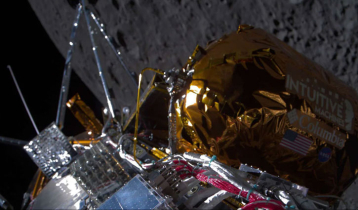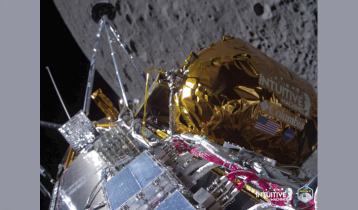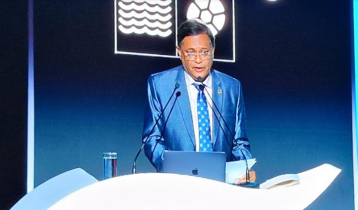Star system next door may host habitable planet
Manzurul Alam Mukul || risingbd.com

Risingbd Desk: Just over four light years away, a planet orbits its cool red-dwarf star – Proxima Centauri, the sun’s closest star neighbour. What is special about this planet is that after years of tracking it, astronomers have come to the conclusion that it is in the habitable zone of its star. This milestone discovery is to be published on August 25 in the journal Nature.
Informally designated Proxima b, the planet revolves around its star once every 11.2 days and is located at a distance of nearly 7 million kilometres from its star. This is only about 5 per cent the Earth-Sun distance. The mass of the planet is believed to be about 1.3 times that of the Earth. It could contain water and it is estimated that surface temperatures could be close to – 40 degrees C.
Put together, all these factors hint at the tantalising possibility that Proxima b can support life or is habitable.
The first exoplanets were spotted in 1995, and today there are over 3,000 known exoplanets. Yet this system is special for being close and lending itself to easy observation.
The star Proxima Centauri is about 4.2 light years away from the sun – a distance that it would take 4.2 years to traverse if you were travelling at the speed of light – a fact that looks very attractive when contemplating interstellar travel. The Breakthrough Starshot project announced by Stephen Hawking and Yuri Milner and also supported by Mark Zuckerberg aims to send thousands of nanocraft into the space to study Alpha Centauri and Proxima Centauri. Pete Worden of the Breakthrough Prize Foundation announced at the press conference organised by the ESO that the first mission would be to push these nanocraft at 20 percent the speed of light to reach the planet in 20 years from the time of launch. He unveiled the plan of a flyby past the planet Proxima b within the next generation. The cost of such a mission which could be borne by a combination of public and private funds, would be close to that of the Large Hadron Collider, he said.
The star, Proxima Centauri, is not very bright and cannot be tracked with the naked eye, especially as it is very close to the brighter binary star pair Alpha Centauri AB. So the astronomers used the HARPS spectrograph to observe it on the European Southern Observatory’s 3.6-metre telescope at La Silla in Chile and also other telescopes around the world. These observations which took place in the first half of 2016 have been dubbed the Pale Red Dot campaign.
Guillen Anglada-Escude of Queen Mary University of London who led the team of astronomers says in the press release announcing this discovery, “The first hints of a possible planet were spotted back in 2013, but the detection was not convincing. Since then we have worked hard to get further observations off the ground.”
Red dwarfs such as Proxima Centauri can also vary in brightness which can mislead the observer into thinking they are observing a planet. This possibility was ruled out by monitoring its changing brightness carefully.
Astronomers also deduce that its climate would be markedly different from the Earth’s, due to its manner or rotation – it appears unlikely the planet will have any seasons.
Guillem Anglada-Escude said, “Many exoplanets have been found… but searching for the closest potential Earth-analogue and succeeding has been the experience of a lifetime for all of us… the search for life on Proxima b comes next.”
Source: The Hindu
Risingbd/ Aug 25, 2016/Mukul
risingbd.com



































